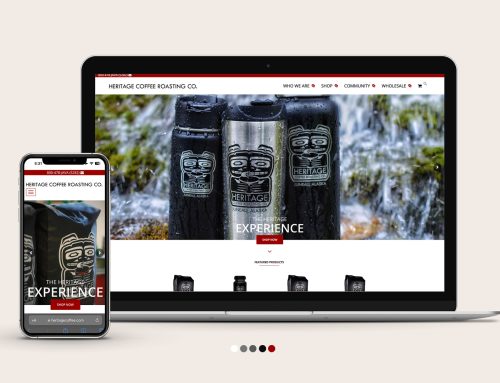It won’t come as a surprise to anyone that e-commerce is a growing industry. According to the findings of Forrester Research, Inc., online shoppers in the United States are expected to spend $327 billion in 2016. That’s up 45% from $226 billion in 2015 – and 62% from $202 billion in 2011.
But that increase in traffic and consumer spending goes hand-in-hand with an increase in competition. It’s never been enough to simply put your product on the Internet and sit back, expecting it to sell itself. But as the competition gets fiercer – and online shoppers get more sophisticated in their expectations – those specializing in e-commerce marketing need to bring their A games to the table.

1. An increase in content marketing
I know, content marketing isn’t anything new. But the way e-commerce businesses use it has shifted over the years, and 2016 will see even more refining in this area.
Consumers are getting increasingly overwhelmed by generic content designed around SE0 keywords – but at the same time, they’re consuming content at a higher rate than ever before. What these content-hungry consumers are looking for is specific, useful, targeted content.
In a crowded market, that makes it hard to stand out. But e-commerce businesses who can tap into niche product lines and unique selling points can get great milage out of content marketing efforts. Rather than trying to compete with others in a huge niche that’s already saturated with great content, you’ll be dealing with a hungry market who is waiting for someone to step up and start providing the specific content that they’re looking for.
Will that someone be you?
2. Video marketing will be huge
When coming up with content in 2016, e-commerce companies need to keep video in mind. According to Cisco, video is expected to account for 69% of all consumer Internet traffic by the end of 2017. That’s a huge chunk!
A major trend in this corresponds to the larger themes in today’s marketing: the most effective videos are the ones that user seek out and share, not the ones that are used by traditional advertising and pushed into people’s attentions.
Even for small e-commerce companies, the tools are available to produce high-quality video relatively cheaply. How to’s, product launches, behind-the-scenes shoots, and values-driven campaigns are all good places to start with video.

Savvy shoppers are increasingly looking for streamlined e-commerce experiences. You’ve probably noticed the trend in recent years towards website design with more flow – particularly when it comes to responsive mobile sites. Fluid grid layouts, flexible image sizes, and other hallmarks of responsive web design need to be included in your site.
Card layouts, where images and text combine in boxes that are used to feature different categories or products are becoming increasingly popular. They also work well on mobile, which is crucial. As mobile technology becomes more widely available, Gartner predicts that we’ll see mobile commerce revenue in the US hit 50% of total US digital commerce revenue. Online shoppers – both on desktops and mobile – are becoming increasingly picky, and if your site is difficult to navigate, or not mobile friendly, you’ll see significant drops in your traffic in 2016.
4. Multi-channel shopping continues to rise
Speaking of mobile, consumers aren’t just changing where they’re shopping, they’re changing how they purchase. Potential customers are shopping across multiple devices. They might browse on their office desktop, on their smart phone while in line at the coffee shop, then finish up the purchase on their tablet that night. Savvy e-commerce businesses need to design an online shopping experience that keeps this multi-channel customer journey in mind.
5. Email marketing is still on top
Even with the rise of social media and all the other forms of marketing, email marketing is still king. That’s one of the reasons behind the increasing number of email collection pop-up boxes you’ll see on the e-commerce sites of larger companies. Normally, shoppers are offered an exclusive discount or coupon in exchange for giving up their email address. We’ll be seeing even more of these in 2016.
While collecting email addresses via pop-ups can yield good results, don’t do it at the expense of good website design. They’re still annoying, and if you have a pop-up that shows up on every single page, you can guarantee you’ll be driving away about as much business as you earn.
6. More sophisticated social media makes targeting audiences easier
Have you heard of Yabberz, Badoo, or Sportlobster? They’re all social media sites that are popular in their (highly-focused) niches. Although most people only talk about the big sites – Facebook, Twitter, YouTube – this overwhelming Wikipedia list shows that there are tons more sites out there.
The opportunity for e-commerce businesses? It’s easier than ever to hone in on your brand’s target audience.
The bigger social media platforms are also providing huge opportunities for e-commerce businesses to find their targets. Pinterest and Twitter have both experimented with sponsored posts targeted at user segments, and now both have announced the ability for companies to post and sell their items directly from the site. And while many have lamented the decline in Facebook’s organic traffic, the site is sharpening the effectiveness of its advertising, allowing e-commerce brands to pinpoint an audience and increase ROI.
A year of possibilities
The biggest certainty about 2016 is that we’ll continue seeing ever more dramatic shifts in the e-commerce market. The companies that will thrive will be the most flexible ones.




